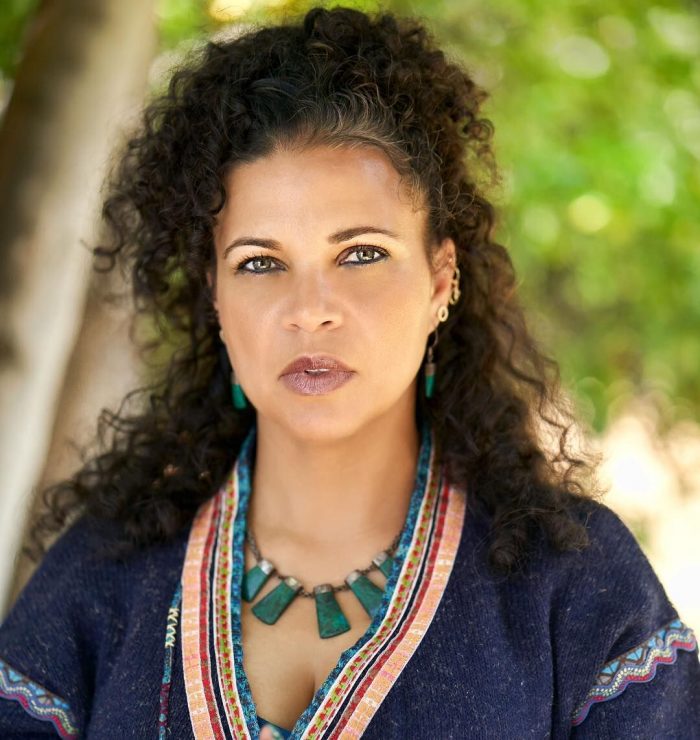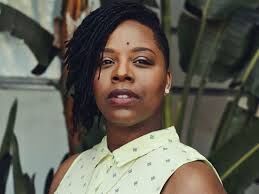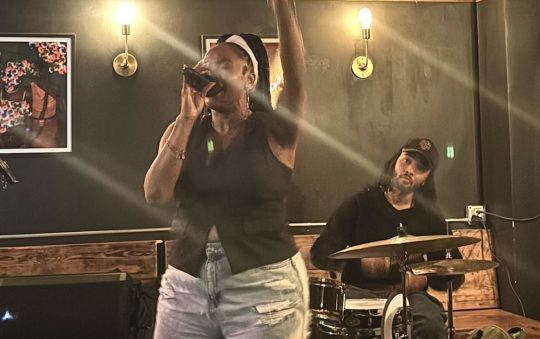Some are touting ‘The Hate U Give,’ as “the first Black Lives Matter movie.” Red flags should have gone up the moment we learned that Fox, recently acquired by Disney, was behind the film with a massive public relations budget, footing the bill for hundreds of advance screenings with celebrity guests, marketing swag, and heavy media saturation – especially in Black markets. We might also wonder about the choice to have Audrey Wells, a White screenwriter whose credits include “Under the Tuscan Sun” and “The Truth About Cats and Dogs,” adapt an urban Black novel for the screen. Angie Thomas’ New York Times bestseller on which the film is based swapped out the book cover that originally pictured a chocolate-colored Afroed girl, for the light-skinned young actress, Amandla Stenberg, who plays the lead, Starr Carter, in the film. Stenberg’s braids hang long as she holds a placard that reads “The Hate U Give,” a reference to Tupac’s THUG LIFE acronym (The Hate U Give Little Infants F*cks Everyone). Tupac, Hip Hop icon, poet, and son of a Black Panther, was intentional with his language. THUG LIFE, tattooed across his mid-section, was a scathing critique of the White-supremacist-capitalist system that treats Black and poor children with contempt, depriving them of resources, and ultimately causing the whole of society to suffer the consequences. The film betrays that analysis by entrenching old tropes. “The Hate U Give” makes Black people primarily responsible for their own oppression. The film asks viewers not to challenge a policing system that kills Black people at least every 28 hours, but to focus exclusively on “Black-on-Black crime,” even when unarmed Black boys are killed by White cops.

The film builds around Starr witnessing the killing of her childhood friend, Khalil, by a White police officer. Starr, straddles two worlds, not quite fitting in to the all-Black, inner-city neighborhood in which she resides that is replete with all kinds of stereotypical Black pathologies, and not feeling at home at her affluent prep school either, where her White friends exhibit class privilege and everyday racisms. Her father, Maverick, is an ex-gang member, who has ongoing conflict with the neighborhood drug dealer, King, for whom Khalil was selling drugs and is also the step-father of Starr’s half-brother, Seven, who is the exact same age as Starr. If it sounds complicated, it is. We can ignore the technical challenges of the film for the moment, including the fact that if Starr’s parents had her when they were 17, they should be 34…and, even if Black don’t crack, it’s a reach to have them played by 44-year-old Russell Hornsby and 47-year-old Regina Hall. Director, George Tillman (of Soul Food), is able to pull the audience in emotionally, with early heart-warming scenes of a loving two-parent family and Starr’s charming voiceover that feels authentic and honest. However, emotional connection, sometimes causes audiences to set aside their critical lens, and we fail to unpack the message of the movie.
W.E.B. DuBois warns that “all art is propaganda.” So the question is what political perspective is The Hate U Give attempting to convey. Amidst the beauty of the familial relationships are a bevy of problematic messages, ones advancing respectability, colorism, sexism, Black flight, integrationism, Black pathology, exceptionalism, messianic models of change, White superiority, deracialization, and good-cop narrative. While Starr’s family is a place of refuge, her neighborhood exemplifies a Black pathology narrative of poor Black folks who are inherently promiscuous and violent. She and her family are portrayed as the exceptions to this because of their ability to redeem themselves from their teenage indiscretions that include drug dealing, gang-banging, incarceration, and promiscuity, through adherence to a patriarchal nuclear-family structure. While Starr’s mother, Lisa, is clear about her desire to escape the neighborhood and build a “better” life for her children, it is Starr’s father who has a sense of community allegiance and Black nationalism that compels the children to memorize the Black Panther Party’s 10-point platform in two of the most contrived scenes in the film. Ultimately, Starr’s father and good-cop uncle Carlos (played by Common), save the family from the savage attack of the neighborhood drug dealer, who attempts to kill them…including his own stepson. Although Khalil’s murder at the hands of a White cop is the crescendo of the film, the officer who killed him is quickly overshadowed by the neighborhood drug dealer as the primary villain, a set-up for an ongoing subtext and primary message about “Black-on-Black” crime as the root of all evil.
Throughout the film, Starr is working to find her voice…to speak for Khalil. An activist lawyer, April Ofrah (played by Issa Rae), who leads the strangely named social justice group “Just Us for Justice,” convinces Starr to go on national television to tell what she saw. Ultimately Starr spends more time naming the neighborhood drug dealer than she does talking about the police who murdered her friend. When the cop is exonerated, she, her siblings, and…for a brief moment…her White boyfriend, join the protest march that they stumble upon. In an ultimate show of melodrama, Starr is lifted onto the hood of a car, handed a too-small bullhorn, and gives the least compelling speech of all time that ends with tears, a fist, and a declaration “Khalil lived! Khalil lived!”

As police move in with tear gas, she drags her freshly beaten brother into the back of a stranger’s pick-up truck and is transported to her father’s corner store to pour milk in their eyes, but the drug dealer is waiting and has his crony throw a molotov cocktail that promises to burn the teens alive. They are ultimately saved with their father shows up and lets them out the backdoor. As Maverick confronts the real villain, King-the-drug-dealer, Starr’s eight-year-old brother has somehow gotten ahold of his father’s gun and points it at the drug dealer. Police, who arrive on the scene, in turn, point their guns at the small child, and Starr steps between. “No!” she says…Her voice gets through to the cops who lower their weapons and see the error of their ways. The entire neighborhood comes out to “speak up” about King, appealing to the White officers to save them. Then, the point of the film, Starr’s voiceover comes in, hitting the audience over the head with the film’s message…that Black communities are saved when Black folks rally together, not against murderous police, but against neighborhood drug dealers. We must trust police to save us from the Kings of the world and bring them to justice, the film proclaims. Starr’s final voiceover, in a line that is not found in the novel, admonishes Black audiences…”Because it’s not about the hate YOU give, it’s about the hate WE give.”
“The Hate U Give” is propaganda that tells us that the answer to our woes is not addressing the intentional design of policing systems that are rooted in slave-catching and kill our people at least every 28 hours, but to trust that system to bring an inherently pathological Black community in line. While no evidence has emerged that police interests have provided financial support for the film or filmmaker (as Boots Riley uncovered with Spike Lee, shortly before BlacKKKlansman was released), Fox’s conservatism, Disney’s history of racist indoctrination, and the entrenchment of both in the White-supremacist-capitalist system that Tupac so brilliantly critiqued, offer cause for healthy suspicion.
We are eager for cinematic representations of this current iteration of Black freedom struggle. As Black Lives Matter organizers, we state emphatically that this is not a “Black Lives Matter film;” it is the antithesis. We encourage Black audiences, all those who reject narratives that make Black victims of police violence responsible for their own deaths, and Tupac fans, to invest their dollars in Black film that uplifts and empowers Black communities. “The Hate U Give” isnot that.







